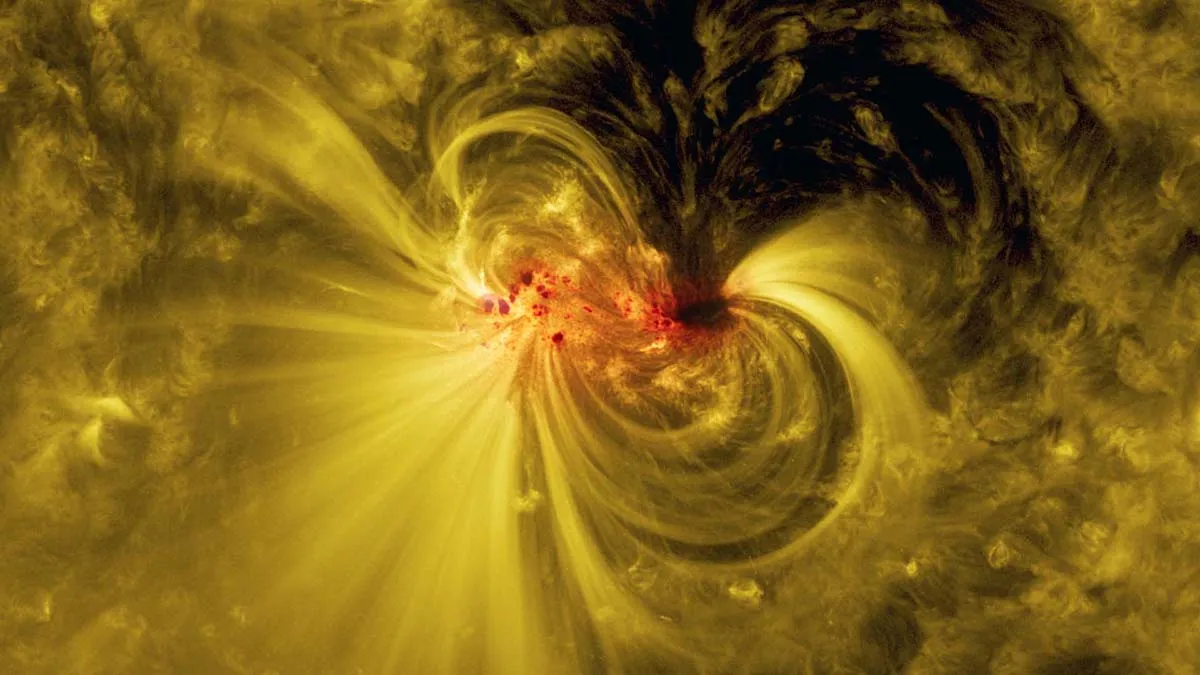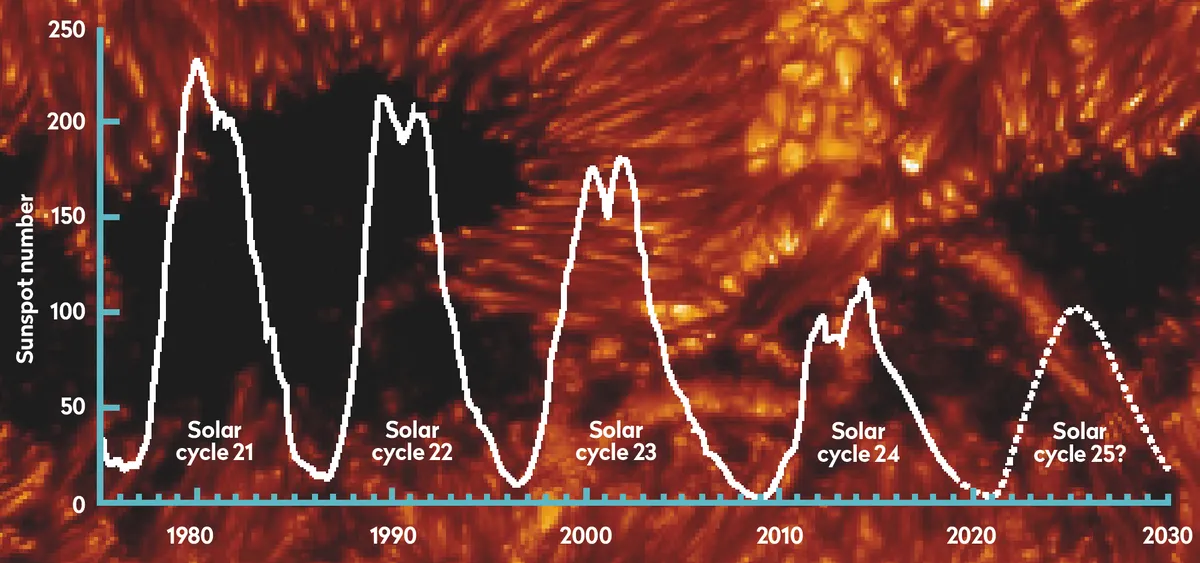Solar flares are incredible bursts of energy that blast outwards from the Sun, releasing radiation into space that can be felt across the entire Solar System, including Earth.
They can cause power blackouts and disrupt radio communications on Earth, but they also have a positive side-effect in the form of aurora displays.
More about the Sun

Solar scientists know a lot about solar flares, but they still have much to learn.
Here are 11 facts about these amazing phenomena, which give astronomers an insight into how our Sun – and other stars like it – live and die.
Solar flares are explosive bursts of energy
Solar flares are intense eruptions of radiation from the Sun that occur when energy stored in twisted magnetic fields is rapidly released into space.
They heat material to millions of degrees and the biggest ones can produce energy equivalent to a billion hydrogen bombs in just minutes.
These bursts span the entire electromagnetic spectrum, including X-rays, ultraviolet, visible light and radio waves.

Sunspots cause solar flares
Solar flares are strongly linked with sunspot activity, and they originate in active regions around sunspots.
Sunspots are darker, cooler patches on the Sun thought to be caused by changes in magnetic activity.
Tangled magnetic fields in these regions reorganise, causing a sudden explosion of energy.
Magnetic reconnection triggers a solar flare eruption
Solar scientists talk about 'magnetic reconnection', where twisted magnetic field lines on the Sun snap and reconnect, causing a burst of electromagnetic energy that travels at the speed of light.

Scientists classify solar flares by strength
You'll hear solar scientists talk about classes of solar flare. Each solar flare is categorised according to its strength by letters A, B, C, M and X. In this system, A is weakest and X is strongest.
Each letter represents a ten-fold increase in energy output, meaning an X-class solar flare is 10 times stronger than an M-class, and 100 times stronger than a C-class.
Within each class, numbers from 1 to 9 are used to further refine the strength of a flare, so you might hear reports of an 'X2.7-class' solar flare erupting from the Sun, for example.
The Sun's activity follows an 11-year cycle
Activity on the Sun in the form of solar flares, sunspots and coronal mass ejections isn't constant.
Sometimes the Sun is very quiet and inactive; other times it is very active.
This pattern of peaks and troughs in activity follows a roughly 11-year cycle known as the solar cycle.
Solar scientists are constantly monitoring the Sun and recording activity in order to keep track of each solar cycle, but it's difficult to know when each cycle has peaked until the peak has died down.

Solar flares affect all layers on the Sun
Flares impact the Sun’s photosphere, chromosphere and corona, heating plasma to tens of millions of degrees Kelvin and accelerating charged particles outward into space.
The energy reaches Earth in minutes
Electromagnetic radiation from solar flares travels at the speed of light, and since the Sun is about 8 lightminutes away from Earth, it takes 8 minutes for that energy to reach us.
This means that by the time we observe a solar flare, its energy has already reached Earth.
Solar flares can be a danger to technology and astronauts
While humans on Earth are not directly affected by them, strong solar flares can cause radio and communications blackouts and can affect navigation systems like GPS.
Humans are protected by Earth's atmosphere, but the dangers of solar flares are much higher for satellites and astronauts in space.

Solar flares cause the aurora
When charged particles from solar flares and associated coronal mass ejections reach Earth, they can create spectacular natural light shows known as the aurora, which are also known as the Northern Lights and Southern Lights
Aurora displays are mostly seen near Earth's poles, but during instances of strong solar activity, they may be seen closer to the equator.

Earth’s atmosphere protects us
Solar flares do not pose a direct health risk to people on the ground, because of Earth’s protective atmosphere and magnetic field.
But astronauts and other spacecraft operating beyond Earth's atmosphere are more vulnerable and at risk if a major solar flare occurs.

Solar flares are still not fully understood
Solar scientists know a lot about solar flares, the solar cycle and the effects of space weather, but many mysteries surrounding the workings of the Sun remain.
Prediction is becoming more accurate, the more scientists learn about the Sun, but it's often not possible to predict a flare until days or even hours before it occurs.
There are studies that show even artificial intelligence (A.I.) could be a useful tool in predicting when solar flares will occur, which could help us prepare against the worst effects of an eruption.
Find out more and get up-to-date predictions regarding all types of solar activity and space weather via the Space Weather Prediction Centre.

